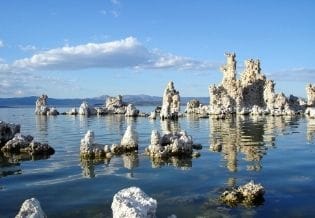Pesticides are the major source of concern as water pollutants. Persistent organochlorines can accumulate in food chains. Chlorpyrifos (O,O -diethyl O -(3,5,6-trichloro-2-pyridinyl) phosphorothioate; CAS No. 2921-88-2; CPY). CPY is a widely used organophosphorus insecticide that is available in a granular formulation for treatment in soil. Pesticides are used to control a wide range of pests including Mosquitoes. Mosquito borne diseases infect millions of people every year globally. The aim of current study was to screen the fresh water pollutants, water quality parameter in irrigation water from El Mahmodia stream, El-Beheira Governorate, Egypt and to determine the adverse effects of Chlorpyrifos on the larvae of Culex mosquito larvae as bio-indicator. The LC95 of Chloropyrifos insecticide was 6331.30 at 24h and increased to 230506.4 after 48h of exposure to the Chloropyrifos insecticide. It is noted that the effect of the exposure time of Chloropyrifos insecticide on the LC50, LC25 and LC95 values had a synergistic interaction with time, as it increased after 48h of exposure when compared to 24 h of exposure. The 0.09 ppm concentration of Chloropyrifos had no effect on the second instar Culex larvae, as there is no mortality over time; the same result is also with the control 0 ppm. There is no effect after 72, 96h of exposure of the population to the detected insecticide. This study concerns with studying the pollutants along El Mahmodia stream in El Beheira governorate in Abo Homs city with its abundance during the four seasons (2016-2017), as well as studding the physicochemical parameters in it. Another concern of this study is estimating the effect of one of this pesticides (Chloropyrifos) insecticide on the second instar Culex mosquito larvae, determining the lethal concentration of this insecticide on the Culex larvae. Along the study area, pesticides are used within a high ratio on the agriculture scale with its four main categories organophosphates, organochlorine, pyrthoid and carbamates. Organophosphates and organochlorine are used at a wide range. Pollutants measuring achieved by using GC-MS as water samples collected seasonally and analyzed, there is a big number of Pollutants which was found as well as other compounds which are banned, such as DDT. The physicochemical parameters Turbidity, COD, BOD in El Mahmodia stream exceeded the desirable limits of (Egyptian Law 48/1982), (WHO, 1993) and (FAO, 1985) although the other parameters as EC, PH, DO,TDS TSS are to be within the permeable limits. HCO3, NH4. Cu also was found to exceed the desirable limits while, Pb, Mn, Fe and Cd within the permeable limits. Chloropyrfos as an organophosphate pesticide used in the present study which was found with 0.09 mg/l in the stream water, used to estimate its effect on the Culex mortality, determining LC25, LC50 and LC95. The experiment continued for 96 h but after 48 h there is no effect of Chloropyrfos on Culex larvae. The experiment began with 20 second instar Culex larvae immersed in 100 ppm, 10 ppm, 1 ppm, 0.1 ppm and finally 0.09 ppm of Chloropyrfos insecticide with five repeats to each concentration, it is noted that the lethal concentration increase after 48h of experiment, the larval mortality decrease with time.
Show less


